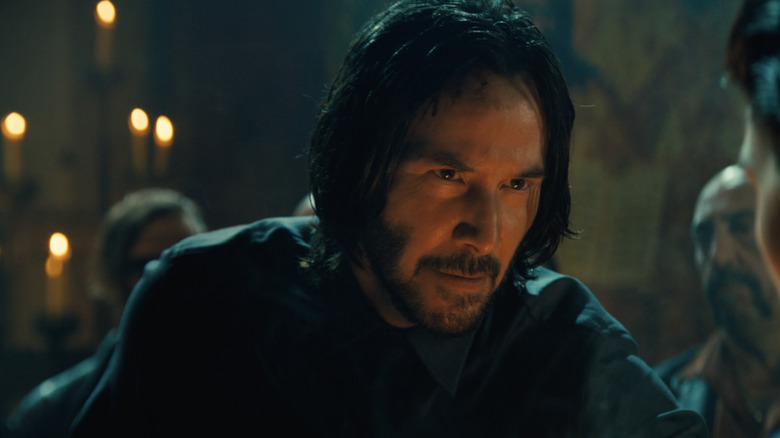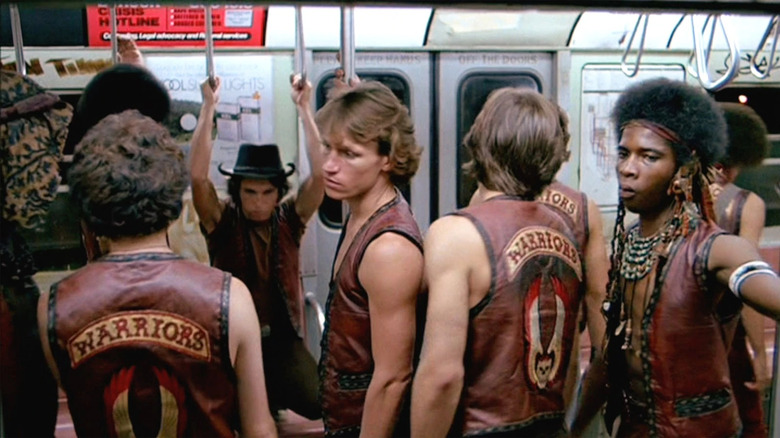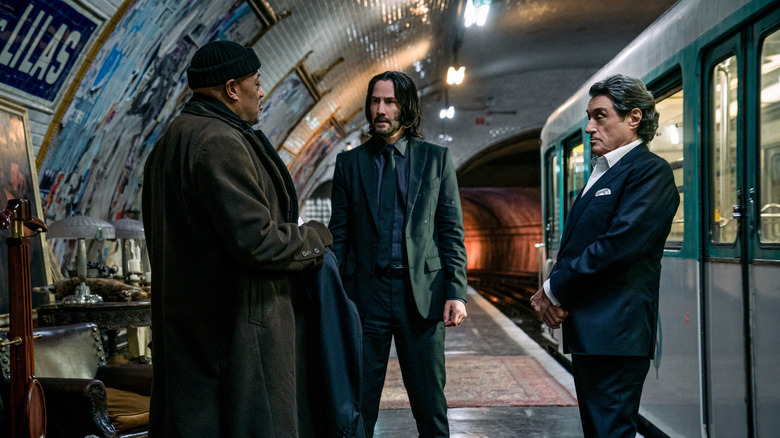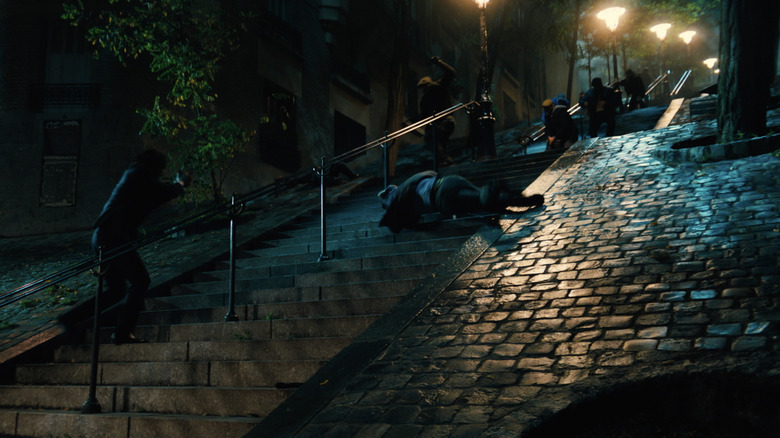John Wick: Chapter 4 Hides A Remake Of The Warriors Inside Its Third Act
This post contains spoilers for "John Wick: Chapter 4."
All right now, for all you boppers out there in /Film land — just how much movie is "John Wick: Chapter 4?" The answer is, "So, so much movie." For anyone looking at the film's runtime worried that it would be one simple story stretched out to a huge length, fret not — "Chapter 4" is an epic in the old-school sense of the term, hopping around the globe with its titular assassin (played once again with brooding intensity by Keanu Reeves) as he faces a series of new and increasingly difficult challenges.
The even more exciting icing on "Chapter 4's" gigantic action cake is that the film's third act could almost be its own self-contained movie. In a certain way, it already is: While the "Wick" films have traditionally made references and homages to a bevy of action cinema classics, the third act setpiece of "Chapter 4" doubles as a de facto remake of Walter Hill's 1979 controversial urban gang warfare flick, "The Warriors." And given the origins of "The Warriors," the sequence also supports the "Wick" franchise's penchant for making Reeves' character a mythological figure.
The Warriors come out to play
In "The Warriors," the titular New York City gang who call Coney Island their home turf are given word that a massive meeting of all of NYC's street gangs is happening in the Bronx. At that meeting, the leader of the city's biggest gang, the Gramercy Riffs, is assassinated, and the Warriors are framed for the deed. With the Riffs putting out word that the Warriors are to be taken dead or alive before they reach their home in Brooklyn, the gang must fight (or "bop," as the term is coined) their way back down through the city.
The bulk of the film follows the remaining Warriors, led by war chief Swan (Michael Beck), as they attempt to reach their home turf while avoiding the Riffs, scores of other colorful (and dangerous) gangs, and the police. For a good chunk of the movie, the Warriors aren't even aware that they've been framed — they treat the long, arduous trek through the city streets as a fact of their way of life, something they signed up for when entering the secret underground world of street gang warfare.
Nowhere to run to, baby
John Wick is certainly no stranger to a secret, underground world of killers, either. In the franchise's fourth film, Wick has fought his way from the NYC streets to the Marquis Vincent de Gramont (Bill Skarsgård), using the rules of the High Table to challenge the Marquis to a duel to the death in a bid to gain his freedom. The Marquis has no intention of letting the duel take place, however; as the rules state, if one party does not show up to the appointed place at the appointed time, their life and terms are then forfeit. To ensure Wick's lateness, the Marquis puts out a contract on Wick to all the killers of Paris, which means John must bop his way through the streets to reach the Sacré-Cœur on time.
John Wick has been through gauntlets before, most famously in the beginning of "John Wick: Chapter 3 — Parabellum," where he was excommunicated while still in NYC and surrounded by eager, greedy assassins. His plight at the end of "Chapter 4" is far more analogous to "The Warriors," however, and director Chad Stahelski makes the homage clear with scenes featuring a female DJ (Marie Pierra Kakoma) broadcasting news of the hit and its progress — from the Eiffel Tower, no less — directly to the assassin network. Her scenes are shot to resemble similar moments in "The Warriors," where that DJ (Lynne Thigpen) had the same function. The referential cherry on top is Stahelski's use of a cover version of "Nowhere to Run" by Lola Collette — "The Warriors" used a cover of the same song (by Arnold McCuller) at the same moment.
The mythology of John Wick
Although Wick's bop through the streets of Paris doesn't see him encounter foes quite as colorful as the Warriors do during their journey, one could argue that the entirety of the "John Wick" saga features more than enough comic-book-like enemies to make the "Warriors" homage complete. "Chapter 4" alone features figures such as the flashy Marquis, the brooding Harbinger (Clancy Brown), the outrageous Killa (Scott Adkins), the blind Caine (Donnie Yen), and the mysterious Mr. Nobody (Shamier Anderson), the last of whom is a particular problem for Wick during his Paris run.
The most clever allusion in this third-act mini-movie goes into and past Walter Hill's film. Hill adapted his movie from a novel by Sol Yurick, which itself is a riff on the ancient Greek tale, "Anabasis," by Xenophon. That book tells the tale of an army of Greek mercenaries who were called to Persia by Cyrus the Younger in a bid to seize the country's throne. Cyrus did not survive the attempt, and the Greek warriors found themselves deep inside enemy territory with their only option being to fight their way back home.
This basis in ancient history applies to Chad Stahelski's desire to make John Wick a mythological figure, from his nickname of "Baba Yaga" in the first film to the end of his Paris gauntlet in this movie, which serves as a visual representation of the Sisyphus myth. Like so much of the homages and references within the "John Wick" films and especially "Chapter 4," it's an impressively rich and layered tapestry that Stahelski, Keanu Reeves, and their collaborators weave, one that makes the series that much deeper and exciting.



